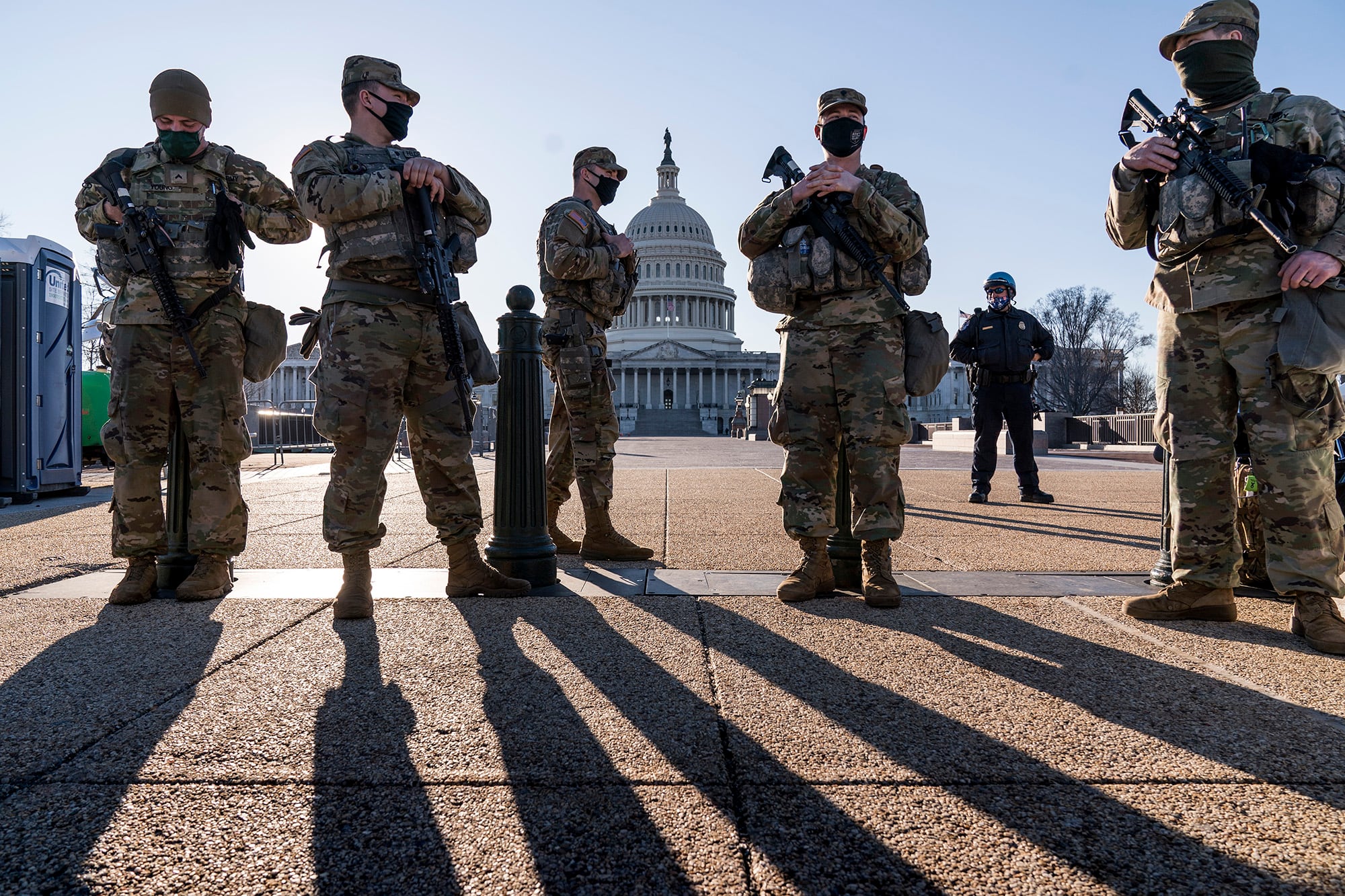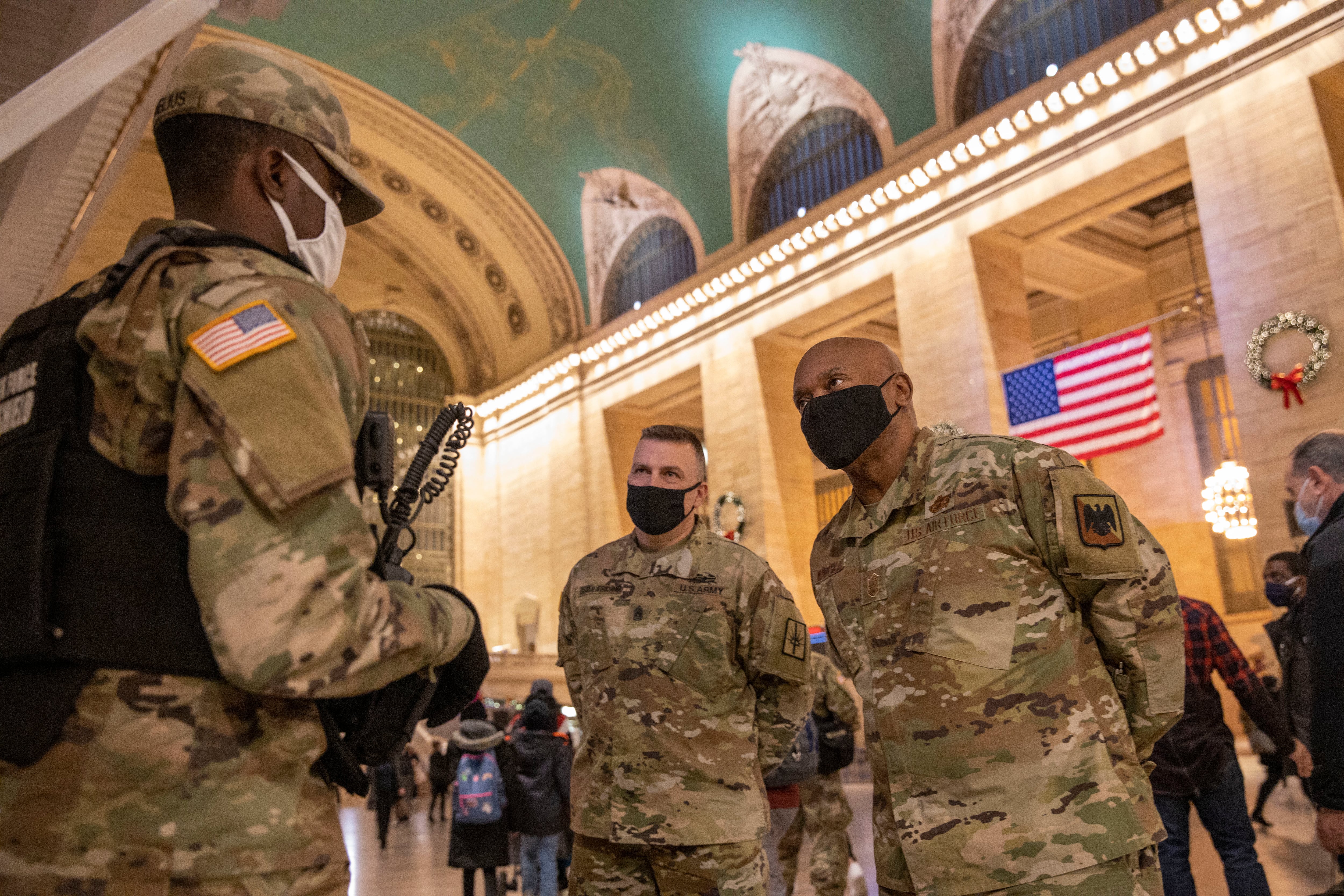National Guard leaders expect their mission on Capitol Hill to end this month and expect their deployment on the southern U.S. border to wrap up in September, potentially lessening the grueling operations tempo for the force in recent years.
In testimony before the Senate Appropriations Committee on Tuesday, National Guard Bureau Chief Gen. Daniel Hokanson said the 2,300 troops currently providing security to the halls of Congress are scheduled to end that mission on May 23 and “we are not aware of any requirement beyond that.”
The number of guardsmen on Capitol Hill swelled to nearly 26,000 troops in the days after the Jan. 6 violent attack on Congress and before the Jan. 20 inauguration of President Joe Biden.
RELATED

Lawmakers have discussed the possibility of a military “quick reaction” force to help supplement Capitol Police forces in the event of future emergencies. That idea — recommended earlier this year by a security review task force led by retired Army Lt. Gen. Russel Honoré — could cost up to $200 million for a permanent or semi-permanent deployment of troops in the nation’s capital.
Hokanson said currently deployed troops won’t remain in place in Washington while that debate unfolds in coming weeks.
“Our folks will all go home,” he said.
Similarly, about 3,500 Guard troops stationed on the U.S. southern border supporting Department of Homeland Security activities are expected to wrap up their tours by the end of September. DHS officials have requested an extension of that mission, but Hokanson said that need may be filled by active-duty forces or other units.
“[Defense officials] are looking at all options now,” he said. “We know the current units are scheduled to come home on Sept. 30, and we are working as quickly as possible to notify those forces so there is no break in coverage.”
Between those missions, pandemic response efforts and other state emergency response, more than 120,000 guardsmen have been deployed at some point in the last 14 months. Earlier this month, the Guard marked 10 million coronavirus vaccinations administered at Guard-staffed vaccination sites.
RELATED

Hokanson said that is the highest mobilization rate for the force since the end of World War II, and acknowledged it has led to stress and strain on service members.
Guard officials need about $521 million in unreimbursed mission costs by August to ensure that training and drill work is not disrupted. House lawmakers have included that money in an emergency funding supplemental expected to be voted on in the next few weeks.
Hokanson also reiterated his belief that Congress must better medical and other benefits for guardsmen to ensure recruiting and retention efforts stay on target, given the increasing demand on the service.
The White House is expected to release its detailed fiscal 2021 budget proposal for the Guard next week.
Leo covers Congress, Veterans Affairs and the White House for Military Times. He has covered Washington, D.C. since 2004, focusing on military personnel and veterans policies. His work has earned numerous honors, including a 2009 Polk award, a 2010 National Headliner Award, the IAVA Leadership in Journalism award and the VFW News Media award.




